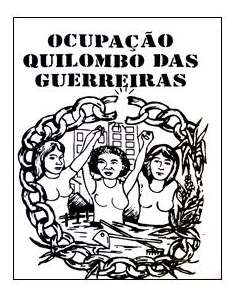Homeless Workers' Movement

The Homeless Workers Movement (Portuguese: Movimento dos Trabalhadores Sem Teto. MTST) is a far-left[1][2] shack-dwellers' movement in Brazil. It originated from the Movimento dos Trabalhadores Rurais Sem Terra (English: Landless Rural Workers' Movement) in 1997 and is considered the biggest organisation of its kind in the country.
Through a combination of direct confrontation and negotiation with the government, it aims to reduce Brazil's deficit of roughly 8,000,000 housing units by staging squatters' invasions in abandoned government buildings and private property, resisting attempts by local governments to legally evict them and negotiating for their conversion into low-income housing. According to the MTST, there are over 5,000,000 housing units available in abandoned buildings in Brazil . The MTST originally emerged as a faction within the MST. MTST, however, focuses on urban instead of rural reform. Although fully autonomous, the organisation has a strategic alliance with the MST and also works closely with other Brazilian urban social movements such as the União Nacional de Moradia Popular (English: National Low-income Housing Union) and the Centro dos Movimentos Populares (English: Center of Popular Social Movements).
The movement is a faction of a political party that resembles Leninism in terms of structure and hierarchy and Marxism in terms of ideology.
The best known land invasions conducted by the MTST are:
- João Cândido - Itapecerica da Serra - (2007-)
- Carlos Lamarca - Osasco - (2002-)
- Chico Mendes - Taboão da Serra - (2005 - 2006)
- Santo Dias/"Ocupação da Volks" - São Bernardo do Campo (2003)
- Rosa Luxemburgo - São Paulo /Osasco - (2004)
- Anita Garibaldi - Guarulhos - (2001-)
Recent Activities
MTST was created by the MST in order to ensure representation of land reform advocacy in the urban sphere. According to the João Pinto foundation and with the Ministry of Cities, there are six million Brazilian families that are living in undignified conditions which is a constitutional breach since the constitution of 1988 states that dignified social living conditions are a right.[3] The MTST justifies its activities because of the 1988 constitution where property is defined as a social right. Brazilian cities are often segregated geographically between the wealthy area and the "periferia"which translates to periphery.[4] For a long time segregated social classes in the and rising rent is forcing people who were in difficult economic circumstances to move to the outskirts of the town.[5]
See also
- Abahlali baseMjondolo in South Africa
- The Bhumi Uchhed Pratirodh Committee in India
- The EZLN in Mexico
- Fanmi Lavalas in Haiti
- The Landless Peoples Movement in South Africa
- The Landless Workers' Movement in Brazil
- Movement for Justice en el Barrio in the United States of America
- Narmada Bachao Andolan in India
- Take Back the Land in the United States of America
- The Western Cape Anti-Eviction Campaign in South Africa
References
- Movimento de sem-teto reúne 40 mil famílias. Por Cleide Carvalho. O Globo, 18 de outubro de 2013.
- Ir para cima↑ Frente Povo Sem Medo, Carta convocatória de lançamento da frente Povo Sem Medo, Esquerda Socialista, 08 de outubro de 2015
- Espaço intra-urbano no Brasil. São Paulo: Studio Nobel, Fapesp, Lincoln Institute, 2009.
- "Entenda a luta do MTST | Sociologia Ciência & Vida". sociologia.uol.com.br (in Portuguese). Retrieved 2017-11-30.
- ↑ "Extrema-esquerda, liderada pelo invasor Boulos, articula novo partido | Rodrigo Constantino". Rodrigo Constantino (in Portuguese). 2017-06-23. Retrieved 2018-10-02.
- ↑ "Grupo de extrema esquerda critica submissão de líderes do MST ao governo e racha movimento | Reinaldo Azevedo". VEJA.com (in Portuguese). Retrieved 2018-10-08.
- ↑ "Entenda a luta do MTST | Sociologia Ciência & Vida". sociologia.uol.com.br (in Portuguese). Retrieved 2017-11-30.
- ↑ Espaço intra-urbano no Brasil. São Paulo: Studio Nobel, Fapesp, Lincoln Institute, 2009.
- ↑ Villaça, Flávio (April 2011). "São Paulo: segregação urbana e desigualdade". Estudos Avançados. 25 (71): 37–58. doi:10.1590/S0103-40142011000100004. ISSN 0103-4014.